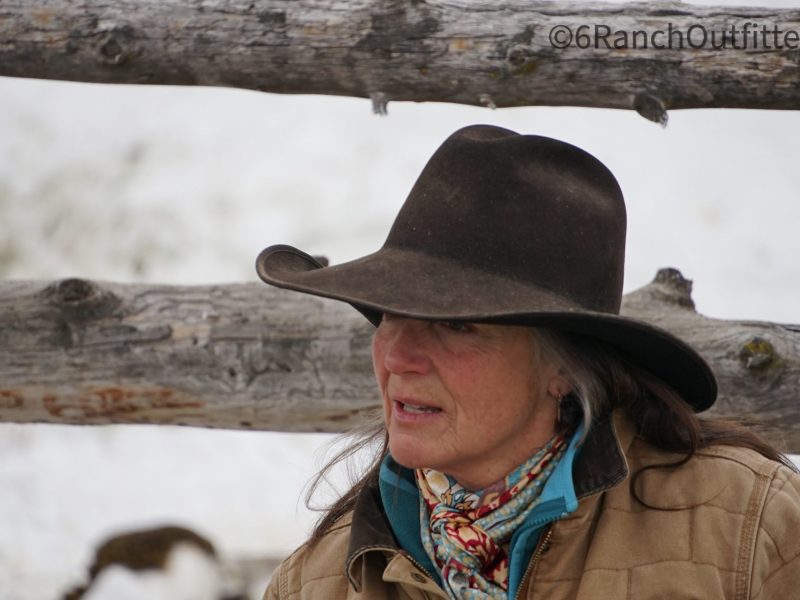
Succession Planning Q&A Part 3: Alternate Ownership Structures
This is the third in a series of question and answer sessions focused on succession planning between Western Landowners Alliance stewardship services director Hallie Mahowald and Howard Weiss, family office practice expert at Bank of America. If you have additional questions around succession planning that you would like to see answered in an upcoming session, please contact Hallie.
What factors come into play when deciding upon an ownership structure?
An ownership structure is usually selected to accomplish certain objectives related to current and future management. As you might expect, tax efficiency and liability reduction are high on this list. There are also other factors that ultimately dictate how a farm or ranch may be titled and owned. Here are some other common factors:
- The size of the family and who will operate the ranch today and into the future
- Whether family members who do not work on the ranch will have ownership rights
- The potential need to raise external capital
- The desire to enable surviving spouses to continue living on the property and receiving income from it
- The process for transferring the property to future generations
- The income needs of the senior generation
Before settling on a specific structure, what questions should the landowner answer?
There are several ownership options and it makes sense for the landowner to evaluate most if not all of them before settling on a specific structure.
Accordingly, when examining each alternative one might consider these questions:
- What rights and responsibilities do owners have?
- How is the management structured?
- How is it taxed?
- What is the process for distributing profits?
- How are operating losses allocated?
- Can one gift ownership interests to family members and heirs?
- How easy is it to sell and transfer ownership interests?
- How does the structure facilitate succession planning and transitions?
- What is the process for terminating the structure?
- What liability does each structure present for its owners and managers?
- What state or federal regulations must be followed?
If individuals own the property, can you speak briefly on the variety of ways the land can be titled and the features of each?
Before discussing the various forms of entity ownership, it is good to start off with an explanation of the most common forms of titling land and its structures. While not an all-inclusive list, generally speaking land that is owned by individuals can be titled as fee simple, a life estate, remainder interest or a term of years.
Fee simple. This is the most common form as it provides the owner with complete control during his or her lifetime and enables the owner to pass along the property with no restrictions. The owner is also free to sell the property to anyone.
Life estate. On the other hand, a life estate only enables an individual to reside on the land and operate the farm or ranch during his or her lifetime. They cannot sell the property or devise (gift it in their will) it to anyone.
Remainder Interest. Upon one’s death, the property (remainder interest) passes in accordance with the terms of a prior owner’s will, trust or other governing document.
Term of Years. Frequently, a surviving spouse is granted a life estate per the terms of a marital trust. The lifetime possession can also be stated in terms of a number of years, after which it passes to the remainder person.
Another way to view ownership is that individuals can hold title to land by themselves or in co-ownership with other individuals. Here are some of the alternatives:
Sole Ownership. As expected, this is the simplest form of ownership and is virtually the same as fee simple or a sole proprietorship. The sole owner can sell and transfer ownership during their lifetime and can convey the property at death through their will or perhaps a revocable living trust, which we can discuss later. If the landowner did not compose a will, the property passes to their heirs in accordance with the intestate provisions of your state. Community property provisions will modify these rights as we may later discuss.
Joint Tenancy. There are a few types of joint ownership but the most common one is joint tenancy with right of survivorship (JTWROS). It is frequently employed by married couples. Its key features include each party holding equal, undivided shares of the land and the right of survivorship upon the first owner’s death. Neither party may reverse this feature through their will as it is automatic. Generally both parties must agree to any changes to the ownership or operation of the property. JTWROS can also be held by non-spouses such as between a parent and children. However, as one’s tax advisor may tell them, this ownership form implies equal ownership so each owner has an equal invested amount regardless of their contribution. However, when the first owner passes away, the entire value of the property, reduced by the contributions of other owners, is included in his or her estate. Accordingly this could have estate tax and inheritance implications, which a tax advisor can properly evaluate.
Tenancy by the Entirety. Another arrangement is tenancy by the entirety, which is virtually the same as JTWROS, but can only be held by married couples. Both of these joint tenancy arrangements feature a key attribute in that the property is passed at death without going through probate, which saves money, time and hassle.
Community Property. There are 9 states that have community property statutes, including Arizona, California, Idaho, Nevada and New Mexico. The essence of community property is that all property that spouses acquire during marriage is considered belonging to both equally. However, property owned prior to marriage or acquired via inheritance or family gifts can remain as separate property. In most of these states, the couples can elect to have survivorship rights or not. Here again, one must consult with their tax advisors if they live in a community property state as these regulations take precedence.
Tenants in Common. This is the common way for two or more non-married people to hold property. Unlike other joint ownership arrangements, under this method, each individual can own a different percentage of the property. This arrangement also does not convey any survivorship rights. Each owner can designate who will inherit their share. One is also generally able to sell or transfer their share during lifetime and usually without the consent of the other owners unless there is an agreement to get consent.
What are the most common ownership structures that landowners choose for a ranch or farm? Please briefly describe each.
For each of the ownership structures, the landowner is challenged to balance its business from its tax characteristics. Both are important. Most commonly, ranchers will adopt one of four structures.
Sole Proprietorship. With a sole proprietorship, the landowner is the sole owner and there is not necessarily any formal legal structure around them. Frequently, two spouses may run an operating ranch but in many cases, no formal partnership is established. They will file a single 1040 along with Schedule F, which delineates the income and expenses of the ranch operations. The actual ranching business is not taxed separately.
Partnership. Partnerships can take several forms and we will cover each in turn. The most basic one is the general partnership, which is an extension of the sole proprietorship. Technically, the general partnership is an association of two or more people who operate a business as co-owners.
Corporation. A corporation is a separate and distinct entity from an individual owner. It essentially distinguishes between shareholders, directors and managers. As with other structures, they are established in accordance with the state laws where they are incorporated.
Limited Liability Company (LLC). An LLC is a corporate structure whereby the owners are not personally liable for the company’s debts or liabilities. Limited liability companies are hybrid entities that combine the characteristics of a corporation with those of a partnership or sole proprietorship.
Smaller ranch owners may tend to go with the sole proprietorship or partnership, which are the simplest to establish and manage. As the size and complexity of the operation advances, landowners begin to adopt the corporate form or the limited liability company structure.
Briefly, what are some less common ownership arrangements that some landowners consider?
Among some of the less common ownership structures are such entities as cooperatives, community-owned land trusts and private operating foundations.
Cooperatives. Cooperatives in farming and ranching enable landowners to pool resources to enhance their economic power in the marketplace. The cooperatives could take different forms. Some might be established as machinery pools for all members to share. Others could be supply cooperatives so as to purchase in bulk and lower costs for all. Still other cooperatives would be devoted to marketing and distribution to provide efficient access to deliver product to the marketplace. State laws generally cover the rules and regulations surrounding the establishment and operation of cooperatives.
Community-owned Land Trusts. A second arrangement is the community-owned land trust. Essentially, the land is owned by the community, which then leases the property to individual ranchers or farmers. The land usually carries a conservation easement to prohibit commercial development and to ensure the natural environment is preserved. In some instances, the land trust could also provide affordable housing for the community.
Private Operating Foundation. For those who wish to pursue a charitable endeavor, there is a third ownership option. This involves establishing a private operating foundation and contributing the land to it. It differs from the traditional private foundation that provides direct grants to other entities to conduct charitable activities. The private operating foundation conducts its own charitable activities, using income from its mission to carry out programs pertaining to that mission. Examples could include museums, research institutions, libraries, etc. As for a ranch, the mission could include preserving the land, waterways and forests among other things. Operating foundations have certain advantages in that they can accept contributions from the public (including other private foundations) and they are not subject to a minimum annual distribution as private foundations are. However, they are subject to certain IRS tests including an overall income test whereby a certain percentage of their income needs to be spent on the charitable purpose. The IRS also has three other tests including an asset test, endowment test and a support test. Readers can consult with their legal advisor to learn what these tests entail.
Each of these three additional ownership types carry their own set of rules and complexities, so it is important for landowners to consult with their tax and legal advisors for guidance.
If the farm or ranch is structured as a sole proprietorship, what are the advantages and disadvantages (e.g. personal risks)?
Advantages include that the sole proprietor has complete control over the operating business and can sell the property without any formal approval or consent. The owner can also decide the disposition of the property at their death. However, the operating business technically ends at the passing of the owner unless successor or survivorship arrangements have been established. With the advantage of complete control comes the downside of unlimited liability. This unlimited liability means that creditors can pursue any and all assets for obligations of the business. Thus, non-business assets are not protected from any business-related activities.
If a landowner chooses a general partnership structure, what are some of the best practices when establishing one? Please speak to the way profits are allocated, taxation and risks.
Partnerships are governed by state law. Some of the key features are that the partners are individually and severally liable for obligations of the partnership. Additionally, profits and losses pass through to the owners as the partnership is not taxed at the entity level. While many states may not formally require a written partnership agreement, it is good practice to have one. When establishing the partnership, there are some important questions to consider:
- How much will each partner contribute and in what form? As an example, consider the case of a new ranch owner who may purchase and own the land and machinery, but may not have experience in actually managing the operations of a working ranch. One might hire a working manager or one could enter a partnership with someone else and that partner may actually run the ranch. The partner may contribute some cash. In this case, one would have to develop a method to value each partner’s contribution. The point here is that a partner’s investment can sometimes be in cash, property or services.
- How will the profits be allocated and distributed? Using the example above, one might distribute profits equally or unequally depending upon the contribution of each partner.
- Will the partnership pay salaries and benefits as well as profits to its owners?
- What authority will each partner have and will certain decisions require approval of all partners?
- What are the terms and conditions for selling or transferring partnership interests?
- What planning needs to take place for such contingencies as disability or death? Is there a buy-sell agreement along with life insurance to fund it?
- How will disputes be settled and what is the process for dissolving the partnership in the future?
These are just some of the factors to consider when establishing a general partnership as there are probably many others based on family circumstances. Landowners should consult with their tax advisors before commencing any type of general partnership arrangement.
Some landowners choose to structure their ranches as corporations. What advantages does a corporate structure offer? Can you speak specifically to a few of the different corporate structures as well (e.g. S corporations).
With a corporate structure, there are frequently more formalities, such as developing a corporate charter and by-laws, appointing a board of directors and issuing stock. Sometimes there are classes of stock such as voting and non-voting. A regular corporation is referred to as a C corporation as distinguished from an S corporation, which we can talk about later.
There are distinct advantages of the C-Corp structure. First, shareholders have limited liability, although owners who work in the entity are liable for any personal actions that are illegal. Also, any shareholder who personally guarantees a loan to the company will be liable for its repayment. Another advantage is that ownership is more easily transferred as one can usually just sell their stock so long as the corporation does not place any restrictions on that right. Sometimes the corporation will have first offer rights or mandatory buy-sell arrangements. A corporation can also offer its shareholders/managers certain health and fringe benefits that otherwise would be taxable under other ownership arrangements. Finally, the corporate structure offers continuity as it does not get automatically dissolved if the owner becomes disabled or dies.
On the flip side, corporations carry certain disadvantages. Among them is the double taxation of profits. A corporation, being a separate legal entity, is directly taxed on its income. Then, when it pays dividends to the shareholders, the owners are taxed on those dividend distributions. A corporation can also be subjected to what is called an “earnings accumulation tax” if it retains too much of its profits so as to not subject its shareholders to paying tax on distributed dividends. Additionally, corporations cannot distribute losses to their shareholders as other structures can. Another potential disadvantage is that unless one restricts the transfer of stock, it is possible for the ownership to ultimately move outside of the family, which can create difficulties.
There is another type of corporate structure that is somewhat of a hybrid between the C Corporation and partnerships. This is the S Corporation. This entity offers the same limited liability as the C-corporation, but enjoys pass-through treatment for federal income tax purposes. Essentially, profits are not taxed at the corporate level but reflected on the tax returns of the individual shareholders. Also, losses can be passed through to shareholders subject to certain restrictions. For example, taxpayers who do not materially participate in the management of the entity could be subject to the passive loss rules where losses have to be offset by passive income. Also, you cannot deduct losses that exceed your tax cost basis. There are some other differences in that S corporations are restricted to 100 shareholders (some family members can count as one shareholder) and there can only be one class of stock although there could be voting rights differences. Additionally, there are restrictions as to who may be shareholders of S corporations. Only U.S. citizens or residents can be shareholders and neither partnerships, corporations nor certain trusts can be shareholders. Here again, the readers need to consult with their CPA and legal advisors to understand the full range of rules and regulations. There are also a lot of complexities if one ever changes structures between a C corporation and S corporation. Finally, another analytical point is the impact of the 2017 Tax Cuts and Jobs Act. Without going into details, under this Act, the corporate tax rate was slashed to 21% so many are now looking at the corporate structure again to figure out if there are benefits to being a C corporation. Additionally, there were adjustments to the tax structure for other entities. It is best to consult with your tax advisor to better understand these impacts.
Many landowners have embraced the family limited partnership and limited liability company format. Please describe the key features of these structures and compare them to a corporate structure.
Partnership structures have evolved beyond the general partnership format to include limited partnerships, family limited partnerships and limited liability companies. In certain cases, these entities are a hybrid between a partnership and corporation, featuring elements of each.
Limited partnerships begin to adopt elements of a corporation. Essentially, there are two classes of partners. First, there are limited partners who do not have liability beyond their investment. However, they do not participate in the management of the partnership. Second, there is at least one general partner, who runs the daily operations of the business. This structure can be suitable for a landowner who wants to spread ownership to family members.
We then have another structure, called the family limited partnership (FLP). This has been popular as an estate planning vehicle. Under this arrangement, the land or business is transferred to the FLP, which then provides limited partnership interests to the owners. The limited partnership owners do not participate in the management of the enterprise but receive pass through income as with other partnership structures. At the same time, there is a small general partnership interest, where the management is vested. Sometimes this general partnership interest is in the form of an LLC, so as to further limit the liability of the operating owner. The estate planning aspect comes into play because the limited partnership interests can be subject to significant valuation discounts due to the lack of marketability and liquidity as well as its minority status. On the other hand, the IRS regularly attacks these discounts, so one needs to carefully value the limited partnership interests so as to bullet-proof them from IRS challenges.
One of the more popular structures nowadays is the limited liability company (LLC). Many ranches, farms and family businesses generally, are organized in this way. The LLC is frequently used instead of an S corporation or limited partnership. It provides the combined benefits of limited liability with pass through profits, thus avoiding the double taxation of C-corporations. They are organized and regulated by individual state statutes, which generally require filing articles of organization with the Secretary of State. The LLC’s owners are called members and there is a managing member. The articles of organization usually specify some of the following:
- The process for adding members.
- Restrictions, if any, on transferring interests.
- The voting power of each member, whether based on investment or per capita.
- How profits are allocated, either by investment allocation or some special allocation reflective of management.
- Which actions require a vote of the members.
The LLC is frequently compared to the S corporation. What are some of the key differences?
Many say that the LLC format is more suitable for real estate, farm and ranch owners because of its relative simplicity. Here are some of the key differences between an LLC and an S corporation:
- An LLC can have unlimited shareholders while an S corporation is limited to 100.
- Within an LLC, one can have special profit allocations based on the member’s contribution while within an S corporation, all shares are equal.
- Non-U.S. citizens can be members of an LLC, but not shareholders in an S corporation.
- S corporations cannot be owned by LLCs, partnerships and certain trusts. This is not the case for LLCs.
- S corporation stock is generally freely transferable while an LLC interest can adopt restrictions.
At the same time, there are several similarities including:
- Limited liability.
- Pass through taxation.
- Governed by state laws.
Bringing succession planning into the discussion, is any structure better or more efficient than others for transferring ownership to the next generation?
As you might expect, much depends upon the dynamics and circumstances of each family. Putting all of it together though, it seems as if the LLC format is becoming the most popular. It offers the discounting ability, can be easily gifted or sold among family members, provides limited liability and pass through income. Also, you can include restrictions on who can own interest.
Another feature one may have their tax advisors explore is whether the ultimate owner of an LLC should be a trust, particularly a revocable trust. One key advantage is that the assets pass to the beneficiaries outside of probate proceedings.
Deciding on the right legal organization is a tricky exercise and one needs to carefully evaluate each of the options with their tax and legal advisors.
Howard Weiss is a Senior Vice President and Family Office Practice Expert at Bank of America, specializing in the family office and private foundation markets. He advises clients on how to establish and run family offices and also provides strategic advice to wealthy families in the areas of investment policy, wealth transfer, business succession planning, philanthropic management and family governance. In the area of private foundations, he assists clients with governance, investment policies and grant making. He is a member of the board of directors of the Morris Goldseker Foundation of Maryland and the Mary and Daniel Loughran Foundation in Washington, D.C. Weiss has published two books on wealth management: The Philanthropic Executive–Establishing a Charitable Plan for Individuals and Businesses and The 100-Year Wealth Management Plan. Weiss holds an MBA from the Wharton School of the University of Pennsylvania and a Bachelor of Science degree from the Ohio State University. He is also a Certified Financial Planner and holds a Master of Science Degree in Financial Planning from the College for Financial Planning.
*The views and opinions expressed in this article are those of the author(s). Publishing this content does not constitute an endorsement by the Western Landowners Alliance or any employee thereof either of the specific content itself or of other opinions or affiliations that the author(s) may have.*




